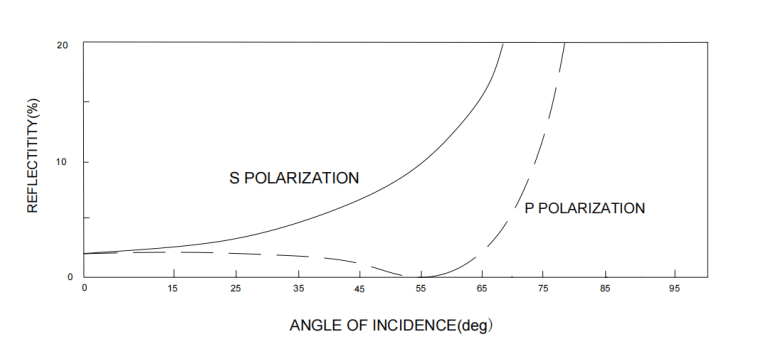Key Takeaways:
- Ignoring optical polarization can significantly degrade image quality and hinder system performance. In imaging applications, issues like chromatic aberration, reduced contrast, ghosting, and flare often arise when polarization is overlooked.
- For laser applications, polarization can be even more critical, potentially rendering systems nonfunctional.
- Key concepts like Brewster’s angle highlight how light behaves differently based on polarization, influencing reflection and transmission.
- To avoid these pitfalls, proper design is essential.
How much does polarization matter? More than you’d think. Ignoring optical polarization is an optical pitfall that can lead to dozens of imaging problems, so be sure to take it into account when planning

In this article, part of a series on optical pitfalls and how to avoid them, we’ll look at this common problem and examine just what issues it can lead to. Although there are some optical systems which are essentially blind to polarization, there are many others in which it can cause potentially unexpected side effects.
Ignoring optical polarization can lead to both degraded image quality and degraded functionality in many different optical applications. Ignoring polarity is especially problematic when you’re working with lasers and certain optical materials, and we’ll t also take a deeper look at why. First, though, just what is polarization?
What is Polarization?
Polarization is a direct result of the wave nature of light. When light propagates, there is an oscillation of the electric field of the light that is perpendicular to the direction of the light wave. This oscillation always occurs, whether or not light is polarized, but unpolarized light is light where the oscillations are evenly distributed and so cancel each other out. In polarized light, by contrast, either all the oscillations are in one particular direction or the oscillations in that one direction are significantly more than those in another.
If you’d like to read more about this, have a look at our three-set series on optical polarization and its applications.
Polarization in Imaging
If you’ve failed to take into account polarization for your imaging application, you may run into a number of different problems. These include:
- Chromatic aberration, causing color shifts and edge bleeding in images
- Changes in contrast, with reduced contrast for light with certain polarization states
- Higher incidence of ghosting and flare
Not knowing the polarization of the light you’re working with can also cause decreased functionality in non-imaging based systems. Beamsplitters and polarizing filters may not work as expected when you don’t know what type of light you are working with. And when you’re working with laser, ignoring polarization becomes more than a slight inconvenience.
Polarization in Laser Applications
When you’re working with a laser, a change in polarization state may do more than simply degrade your optical experience—- it may make your intended application completely impossible.

The way a laser beam focuses depends on the polarization of a laser beam, as does the manner and direction in which it is reflected. One important concept to be aware of is Brewer’s angle, the angle of incidence at which, in an uncoated optical surface, s-polarized light is partially reflected while p-polarized light is transmitted. Brewster’s angle depends on angle of incidence, and can be calculated by θB= arctan (n1/n2), where n1 and n2 are indices of refraction of the two mediums. The image below shows how reflectivity varies with polarization and angle of incidence for the interface of air and glass.

Brewster windows and Brewster plates are optical components that use this concept to separate s and p polarized light. Another application of Brewster’s angle in laser applications is tuning with a birefringent tuner, which separates light by wavelength.
The degree of polarization after propagation through an optical system or device can be quantified by the polarization extinction ratio, PER. This is defined as the ratio of the optical power between two modes: the principal polarization mode and the orthogonal polarization mode. For instance, a PER of 100:1 means that the light in the principal polarization direction is a hundred times that in the (perpendicular) orthogonal direction.
Avantier and Your Design Concept
Ignoring polarization can be a major stumbling point—- but not if you’ve got a knowledgeable team on your side. Avantier’s experienced design and engineering team can work with you to ensure your optical design takes into account the polarization of light in your system as well as all the other parameters you need to keep track of. Contact us today to set up an initial consult or discuss design and manufacturing possibilities.
GREAT ARTICLE!
Share this article to gain insights from your connections!







